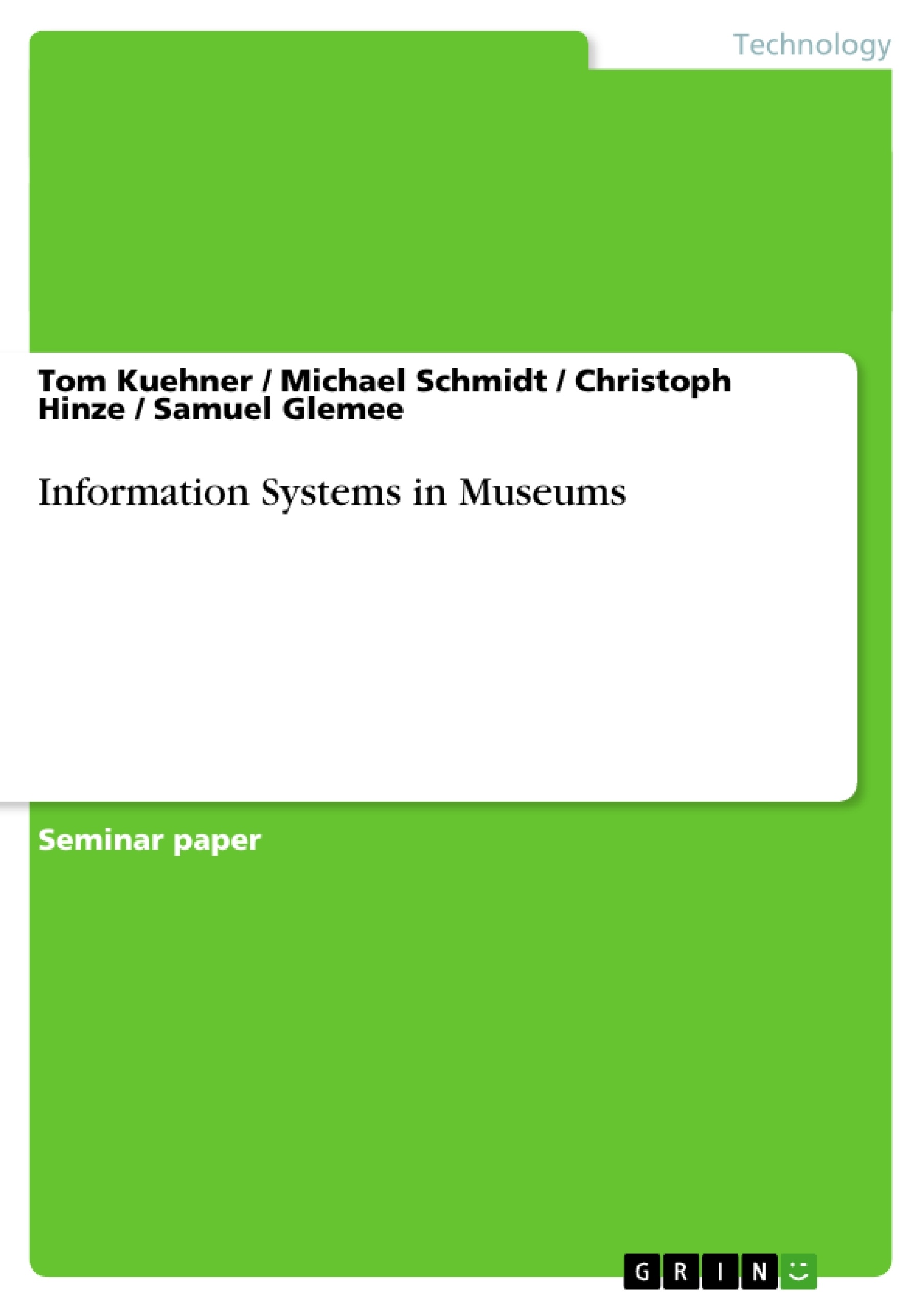Excerpt
Table of Contents
1 Introduction
1.1 A brief recent history
2 Information systems in museums, an overview
2.1 Printed information-systems
2.2 Acoustic information systems
2.3 Information systems with use of computers
3 HIPS Hyper Interaction within Physical Space
3.1 A school visit scenario
4 Features of portable information systems
4.1 Advantages
4.2 Disadvantages
5 Conclusion
6 References
Figures
Figure 1: Figure of the HIPS
1 Introduction
In almost every part of modern life we have contact with different information systems. In the last few decades the computer became a more and more important medium for collecting, structuring and providing of information. A relative new invention is the possibility to locate a certain device in the physical space. It was originally developed for military purposes, but comes now to a broader application in the private and public sector. As a rather specific but never the less significant example we would like to present a connection of computing in one of its latest appearances and the possibility of locating devices connected to a totally new kind of information system. We would like to introduce the use of handheld computers for the use of a push/pull information system in the context of an exhibition or museum.
1.1 A brief recent history
Automation technologies were introduced to museums in the early 1960s. Projects like SELGEM (Self Generating Master) involved several museums and supported data entry to track collection information. Large scale computer use by museums was not feasible at that time because early computers were expensive and required space for installation. But that would change quickly. In 1968 Hewlett-Packard released its first programmable calculators. The early machines, such as the HP-9100, weighed 40 pounds and might be considered the first desktop computers. While Texas Instruments is credited with inventing the first pocket calculator in 1967, Hewlett-Packard developed the first programmable pocket calculator in 1974. After a NASA mission, the pocket HP-65 was promoted as having served "as a backup for Apollo's on-board computer." In ten years programmable computers had evolved from filling rooms to fitting in pockets.
While pocket computers may have found immediate use in museum offices, evidence of pocket computers enhancing the visitor experience was not found. The use of hand helds in museum exhibitions seems to have been inspired by the early personal digital assistants (PDAs) such as the Zaurus, Psion, and Newton. In 1993 two young men formed a company, Visible Interactive, around their modification of the Apple Newton they called iGo. Promoting it as the “world’s first interactive audio tour” their idea was to provide museum visitors with an enhanced personal experience through the accessibility of multimedia, text, and audio while walking through an exhibit space. Unlike the audio guides available at the time, the iGo users did not have to follow a linear path. Visitors could select as much text, graphics, and audio content about an exhibit as they wanted and in any order they chose. They even created special content just for kids.
A 1994 pilot of the Newton interactive exhibit guide took place at the Minneapolis Institute of Art covering five of their period rooms. The next year Visible Interactive partnered with the University Art Museum and Pacific Film Archive at the University of California at Berkeley to pilot what the museum called their “pocket curator.” The UAM/PFA tour was designed to give the visitor “a personalized interactive tour” and “a more meaningful experience” by providing commentary and biographical information about 15 works of art. In 1997 Visible Interactive launched their first major use of the iGo interactive guides in a traveling exhibit celebrating the Smithsonian’s 150th anniversary. The Smithsonian iGo tour provided information on 97 of the 300 objects exhibited including 2 1/2 hours of audio, text and graphics. Visitors were given a modified touch screen Apple Newton in a colorful case with a neck strap and headphones. Visible Interactive also created tours for the Smithsonian’s National Museum of Natural History, and the Air and Space Museum. In addition to the museum tours, they produced an audio walking tour of San Francisco’s Chinatown.
The advent of the Newton inspired German researchers Gessler and Kotulla to engineer them as mobile Web browsers. They imagined applications such as virtual libraries and travel guides in a wireless environment. But when the Newton was discontinued in 1998 most of the projects it supported disappeared as well. Only one museum, the Kulturen in Lund, Sweden, reported to continuously use the Newton from 1996 to today. In spite of great audience interest in the mobile computer guides, the participating museums reported a range of problems with putting the devices into the public’s hands. The Newton was heavy, fragile, and expensive with a cost per unit of about $800. The UAM/PFA reported that employees were even reluctant to give them out fearing “equipment malfunction and theft.”
Just as the Newton disappeared, the Smithsonian experimented with another new hand held device that was designed specifically for reading. A paperback sized computer, the touch screen Rocket eBook supported hypertext files, sound files, and black and white graphics. Like the Newton, it had a back light enabling use in dimly lit museum exhibits. Eight units were placed in an exhibit at the National Museum of American History, On Time, in 1999. The experiment was fraught with problems including bracketing the ebooks securely, powering them, and preventing visitors modifying the files on the devices. Interestingly children were intuitively able to use the devices, but adults rarely used the information on them beyond the first page. The museum staff was kept busy reloading files onto the devices because kids systematically deleted content from them. Eventually the Rocket eBooks were pulled from the exhibit when broken and were replaced with wall-mounted text panels.
[...]
- Quote paper
- Tom Kuehner (Author)Michael Schmidt (Author)Christoph Hinze (Author)Samuel Glemee (Author), 2003, Information Systems in Museums, Munich, GRIN Verlag, https://www.grin.com/document/18074
Publish now - it's free






















Comments